
In the dynamic and innovative startup landscape, Human Resources (HR) plays a pivotal role in shaping the culture, fostering talent, and driving organizational success. Startup founders face unique challenges and opportunities when it comes to building and managing their teams. Understanding the critical aspects of HR in the startup environment is essential for cultivating a thriving workplace and steering the company toward sustainable growth.
Join us on a journey through the nuanced world of HR in startups, where innovation and people-centric strategies converge to lay the foundation for success. By grasping these fundamental principles, founders can establish a workplace that attracts top-tier talent and fosters an environment where employees can thrive, contribute, and grow alongside the startup’s trajectory.
Early Focus on Company Culture
Establishing a positive and inclusive company culture from the beginning is essential. Clearly define core values, set expectations, and ensure they align with the startup’s mission.
Defining Core Values:
Start by clearly defining the core values that represent the principles and beliefs of your startup. These values are the foundation for the company culture, guiding decision-making, behavior, and interactions among team members.
Aligning with Mission and Vision:
Ensure that the established culture aligns seamlessly with the mission and vision of the startup. The company culture should reflect the overarching goals and aspirations of the organization, creating a cohesive narrative that resonates with both employees and external stakeholders.
Inclusive Communication:
Promote open and inclusive communication to involve all team members in developing the company culture. This can involve regular team meetings, workshops, or surveys to gather input and feedback. By including diverse perspectives, you can build a culture that is representative of the entire team.
Leadership Example:
Leadership plays a pivotal role in shaping company culture. Founders and leaders should embody the values they seek to instill in the organization. Leading by example, demonstrating the desired behaviors, and consistently reinforcing the core values create a culture permeating the company.
Cultural Onboarding:
During the onboarding process, emphasize the importance of company culture to new hires. Provide an orientation that covers job responsibilities and immerses them in the organization’s values, mission, and expectations. This helps new team members integrate into the culture seamlessly.
Recognition and Rewards:
Integrate the core values into employee recognition and reward programs. Acknowledge and celebrate behaviors that align with the company culture. This not only reinforces the desired values but also encourages employees to actively contribute to the positive culture.
Adaptability and Evolution:
While it’s essential to establish a strong foundation early on, recognize that company culture is not static. It should be adaptable to growth, changes in the industry, and the evolving needs of the organization. Regularly reassess the culture and make adjustments as necessary to maintain relevance.
Measuring Cultural Health:
Implement metrics and feedback mechanisms to measure the health of the company culture. This can include regular surveys, employee feedback sessions, or cultural audits. Analyzing these metrics allows founders to identify areas of strength and areas that may require attention.
Promoting Employee Engagement:
A positive company culture fosters employee engagement. Engaged employees are more likely to be committed, innovative, and satisfied with their work. Establish practices that encourage collaboration, teamwork, and a sense of belonging among team members.
An early focus on company culture involves intentional and strategic efforts to define, communicate, and embed core values into the fabric of the organization. By fostering a positive and inclusive culture from the outset, startups can create a workplace that attracts and retains top talent, drives innovation, and sets the stage for long-term success.
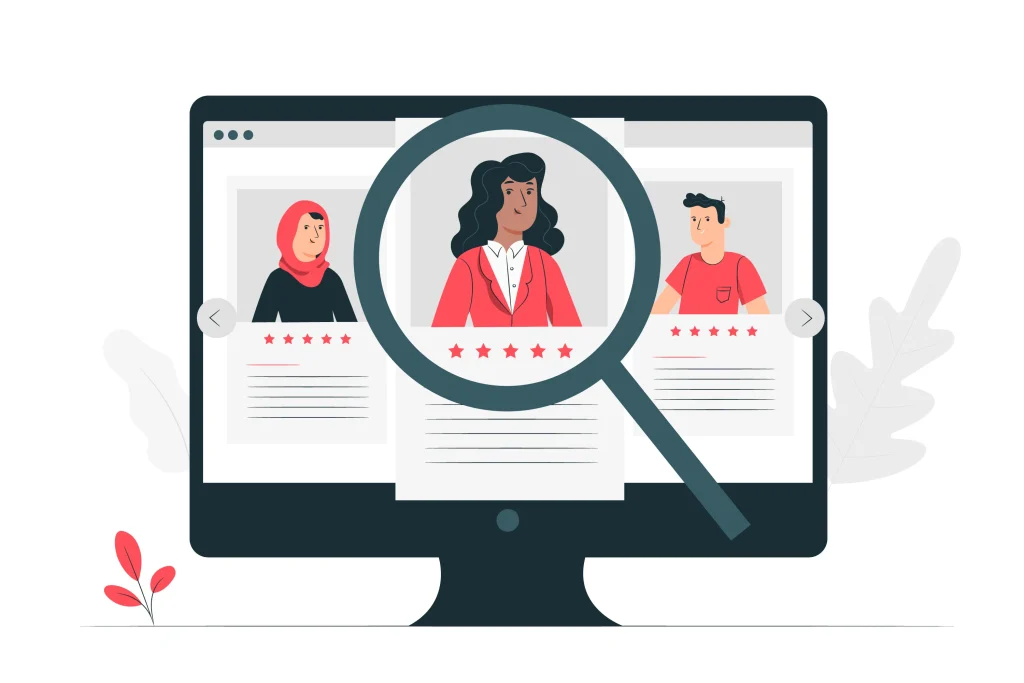
Agile Hiring Strategies
Implement agile hiring practices, emphasizing flexibility and the ability to identify and onboard talent quickly. This ensures the team remains adaptable in the face of evolving challenges.
1. Rapid Recruitment Process:
Agile hiring involves streamlining the recruitment process to minimize delays. Reduce the time between posting a job opening and making a hiring decision. This ensures that the startup can swiftly respond to the dynamic needs of the business and secure skilled individuals promptly.
2. Clearly Defined Roles and Requirements:
Before initiating the hiring process, ensure that roles and requirements are clearly defined. This clarity helps in identifying the skills and qualities needed for each position, streamlining the selection process and avoiding unnecessary delays.
3. Continuous Talent Pool Development:
Rather than waiting for specific positions to open up, continuously build and maintain a talent pool. This involves proactively seeking out potential candidates, engaging with them, and keeping them informed about the company. When a position becomes available, the startup can quickly reach out to pre-qualified individuals.
4. Flexibility in Job Descriptions:
Craft flexible job descriptions that emphasize key skills and competencies rather than rigid qualifications. This allows for a broader pool of candidates and facilitates a quicker hiring decision without compromising on the quality of talent.
5. Collaborative Hiring Process:
Involve multiple stakeholders in the hiring process to expedite decision-making. Collaborative efforts can include input from team members, managers, and even cross-functional representatives. This not only accelerates the selection process but also ensures alignment with various perspectives within the organization.
6. Utilize Technology and Automation:
Leverage technology to automate repetitive tasks in the hiring process, such as resume screening and scheduling interviews. Applicant Tracking Systems (ATS) and other recruitment tools can significantly speed up the initial stages of candidate evaluation.
7. Iterative Assessment and Feedback:
Adopt an iterative approach to candidate assessment. Instead of waiting until the end of the process, provide feedback to candidates at various stages. This not only keeps candidates engaged but also allows for real-time adjustments based on feedback, ensuring a more responsive and efficient hiring process.
8. Test Projects or Assignments:
Incorporate practical assessments or test projects into the hiring process. This provides firsthand evidence of a candidate’s skills and capabilities, allowing for a more informed and quicker decision-making process.
9. Onboarding Preparedness:
Anticipate successful hires by having an onboarding plan ready in advance. A well-prepared onboarding process ensures that new team members can integrate quickly, contributing to the startup’s objectives without unnecessary delays.
10. Regularly Evaluate and Adapt:
Regularly evaluate the effectiveness of the hiring process and adapt as needed. Solicit feedback from hiring teams, candidates, and other stakeholders to identify areas for improvement. This continuous improvement mindset is fundamental to agile hiring.
By embracing agile hiring strategies, startups can position themselves to swiftly identify, attract, and onboard the right talent. This agility is crucial in the fast-paced environment of startups, allowing them to respond rapidly to market changes and maintain a competitive edge in the talent acquisition landscape.

Transparent Communication
Transparent communication is a cornerstone of a healthy and thriving workplace culture. It involves open, honest, and clear communication between leadership, management, and employees. Here’s a more detailed exploration of transparent communication in a startup environment:
1. Open Door Policy:
Establish an open-door policy that encourages employees to express their thoughts, concerns, and ideas freely. This policy creates an environment where individuals feel comfortable approaching leaders or managers with feedback, questions, or suggestions.
2. Regular Updates and Town Halls:
Foster transparency through regular updates on company goals, achievements, challenges, and changes. Conduct town hall meetings or virtual sessions where leadership communicates openly with the entire team. This forum allows for direct interaction, question-and-answer sessions, and the sharing of important information.
3. Clear Communication Channels:
Ensure there are clear and accessible communication channels within the organization. This includes regular team meetings, messaging platforms, and other tools that facilitate transparent and efficient communication. Clearly define the purpose and guidelines for each channel to avoid confusion.
4. Share Company Vision and Strategy:
Transparent communication extends to sharing the company’s vision, mission, and long-term strategy. Employees should understand the larger goals of the organization and how their individual contributions align with these overarching objectives.
5. Acknowledge Successes and Challenges:
Celebrate successes openly and acknowledge challenges. Being transparent about both achievements and setbacks creates a culture of accountability and resilience. It fosters a realistic understanding of the company’s journey and emphasizes the collective effort required for success.
6. Feedback Loops:
Establish regular feedback loops to gather input from employees. This can be done through surveys, suggestion boxes, or one-on-one meetings. Act on feedback when possible and communicate changes or updates resulting from employee input.
7. Honest Performance Feedback:
Provide honest and constructive performance feedback to employees. Regular performance reviews should not be limited to documenting achievements but should also address areas for improvement. Transparent feedback promotes growth and development.
8. Transparency in Decision-Making:
Communicate the decision-making process to employees, especially when significant changes are on the horizon. While not every decision requires extensive explanation, providing insights into the reasoning behind major choices helps build trust and understanding.
9. Crisis Communication Plan:
Have a well-defined crisis communication plan in place. Transparent communication during challenging times, such as financial downturns or unexpected disruptions, is critical. Clearly communicate the situation, steps being taken, and potential impacts on the team.
10. Accessibility of Leadership:
Ensure that leadership remains accessible and approachable. Leaders should be visible and available for communication, whether through scheduled office hours, regular check-ins, or informal interactions. This accessibility reinforces the idea that communication is a two-way street.
11. Clarity in Expectations:
Communicate clear expectations regarding roles, responsibilities, and performance standards. Lack of clarity can lead to misunderstandings and frustration. Transparent communication sets the stage for a shared understanding of what is expected from each team member.
12. Learning from Mistakes:
Transparently address mistakes and failures, emphasizing the importance of learning from them. Avoiding blame and instead focusing on solutions and improvement contributes to a culture where individuals feel safe admitting errors and proposing innovative solutions.
Leaders cultivate a culture of trust, collaboration, and shared understanding by prioritizing transparent communication in a startup environment. This foundation enhances employee engagement and contributes to the organization’s overall success and resilience.

Employee Development and Growth
Invest in employee development to contribute to both individual and organizational success. Provide opportunities for skill enhancement, career growth, and mentorship programs.
1. Individualized Development Plans:
Create individualized employee development plans based on their skills, interests, and career aspirations. Understand the unique strengths and areas for improvement of each team member and tailor development initiatives accordingly.
2. Training and Skill Enhancement:
Offer training programs and opportunities for skill enhancement. This can include workshops, online courses, or mentorship programs to help employees acquire new skills and stay updated on industry trends. Encourage a culture of continuous learning within the organization.
3. Clear Career Pathways:
Provide employees with clear career pathways within the organization. Transparently communicate the potential career progression, and work collaboratively to set achievable goals that align with both individual aspirations and the company’s needs.
4. Mentorship and Coaching:
Establish mentorship and coaching programs where experienced employees guide and support those in earlier stages of their careers. This not only facilitates knowledge transfer but also contributes to the personal and professional growth of both mentors and mentees.
5. Cross-Functional Experiences:
Encourage employees to engage in cross-functional experiences. This could involve projects that allow individuals to work in different departments or collaborate on tasks outside their usual scope. Exposure to diverse experiences fosters a more well-rounded skill set.
6. Performance Feedback and Recognition:
Provide regular and constructive performance feedback. Recognition for achievements, no matter how small, reinforces a positive work environment and motivates employees to continue developing their skills.
7. Tuition Reimbursement and Continuous Education Support:
Offer tuition reimbursement or support for continuous education, showing a commitment to employees’ academic and professional growth. This can include financial assistance for further degrees, certifications, or attendance at relevant conferences.
8. Goal-Setting and Development Discussions:
Conduct regular goal-setting and development discussions. Collaborate with employees to set short-term and long-term goals, ensuring alignment with both personal aspirations and the strategic objectives of the startup.
9. Opportunities for Leadership Development:
Identify and nurture potential leaders within the organization. Offer leadership development programs, workshops, or mentorship opportunities to individuals who show leadership potential. This ensures a pipeline of skilled leaders for future growth.
10. Networking and Industry Involvement:
Encourage employees to participate in industry-related events, conferences, or networking opportunities. Building a professional network and staying connected with industry trends can contribute to personal growth and bring valuable insights back to the organization.
11. Recognition of Achievements:
Publicly recognize and celebrate employee achievements. This can be done through company-wide announcements, newsletters, or dedicated recognition events. Acknowledging accomplishments reinforces a culture of appreciation and motivates others to strive for excellence.
12. Support for Personal Development:
Recognize that personal development extends beyond professional skills. Provide support for personal development initiatives such as wellness programs, stress management workshops, or other activities that contribute to overall well-being.
13. Flexibility in Roles:
Be open to allowing employees to explore different roles within the organization. This flexibility can lead to the discovery of hidden talents and passions, benefiting both the employee and the startup.
14. Regular Check-Ins:
Conduct regular check-ins to discuss career goals, progress, and any challenges employees may be facing. These discussions provide an opportunity for continuous feedback and adjustments to development plans.
By investing in employee development and growth, startups retain valuable talent and foster a culture of innovation and adaptability. It positions the organization for long-term success by ensuring that the workforce has the skills and motivation needed to thrive in a dynamic business environment.

Remote Work Policies
Establish clear policies and frameworks for remote and flexible working arrangements, maintaining the company’s culture and communication practices in a distributed team environment.
1. Clear Guidelines and Expectations:
Establish clear guidelines and expectations for remote work. Communicate the startup’s policy on working hours, availability, and expectations regarding productivity. This ensures alignment between the company’s needs and the employee’s responsibilities.
2. Communication Tools and Protocols:
Define the communication tools and protocols for remote collaboration. Specify which platforms should be used for meetings, messaging, and project management. Ensure that employees are equipped with the necessary tools and have access to reliable communication channels.
3. Flexible Work Hours:
Consider offering flexible work hours to accommodate different time zones and individual preferences. This flexibility empowers employees to create a work schedule that aligns with their peak productivity hours while fulfilling their responsibilities.
4. Remote Work Equipment and Security:
Address providing necessary equipment for remote work, such as laptops, monitors, and ergonomic furniture. Additionally, it emphasizes the importance of data security and provides guidelines on maintaining a secure remote work environment.
5. Virtual Collaboration and Team Building:
Encourage virtual collaboration and team-building activities. This could include regular virtual team meetings, virtual coffee breaks, or other initiatives to maintain a sense of camaraderie and connection among remote team members.
6. Performance Measurement and Accountability:
Establish clear performance measurement metrics for remote employees. Emphasize accountability for deliverables and outcomes. Regular check-ins, goal-setting sessions, and performance reviews should be conducted to ensure alignment with company objectives.
7. Remote Onboarding Process:
Develop a comprehensive onboarding process for remote hires. Provide them with the necessary resources, introduce them to the company culture, and ensure that they have access to all the information needed to integrate seamlessly into the remote work environment.
8. Policies for Time Tracking and Attendance:
Implement policies for time tracking and attendance. This could involve the use of time-tracking tools or the establishment of clear procedures for reporting work hours. This ensures transparency and accountability for remote employees.
9. Health and Well-being Support:
Acknowledge the importance of employee well-being in a remote work setting. Encourage breaks, emphasize the importance of maintaining a work-life balance, and provide resources for mental health support. Consider implementing wellness programs or initiatives to support overall well-being.
10. Data Privacy and Confidentiality:
Emphasize the importance of data privacy and confidentiality. Remote employees should adhere to the same data security standards as those in the office. Clearly communicate policies regarding the handling of sensitive information and data protection measures.
11. Accessibility and Inclusivity:
Ensure that remote work policies promote accessibility and inclusivity. Consider the needs of employees with diverse working conditions and provide accommodations where necessary. Strive to create an environment where all team members, regardless of location, feel included and supported.
12. Flexibility for Family Responsibilities:
Recognize the challenges remote employees may face, especially those with family responsibilities. Consider offering flexible schedules or accommodations to support employees in managing their work and personal responsibilities.
13. Regular Policy Reviews and Updates:
Remote work policies should not be static. Regularly review and update policies to adapt to changing circumstances, technology advancements, and feedback from remote employees. This ensures that policies remain relevant and effective over time.
14. Legal and Compliance Considerations:
Ensure that remote work policies comply with relevant labor laws and regulations. Address issues such as tax implications, employment contracts, and any legal considerations associated with remote work in the jurisdictions where employees are located.
By implementing comprehensive remote work policies, startups can empower their teams to work efficiently and collaboratively, regardless of physical location. Well-defined policies contribute to a positive remote work experience, enhance employee satisfaction, and position the startup to attract and retain top talent in a competitive market.

Competitive Compensation and Benefits
Offer competitive compensation packages and attractive benefits, differentiating the startup through unique perks like equity options and a flexible work environment.
1. Market Research and Benchmarking:
Conduct thorough market research and benchmarking to understand industry standards and competitor practices. This ensures that your startup’s compensation packages remain competitive and aligned with the prevailing market rates for similar roles.
2. Base Salary and Performance-Based Pay:
Offer competitive base salaries that reflect the skills, experience, and responsibilities of the employees. Additionally, consider incorporating performance-based pay, such as bonuses or profit-sharing, to reward exceptional contributions and align individual goals with overall company success.
3. Equity Options and Stock Grants:
Consider offering equity options or stock grants, especially in startups where potential equity value can be significant. This aligns employees’ interests with the long-term success of the company and serves as a valuable component of overall compensation.
4. Flexible Compensation Packages:
Provide flexibility in compensation packages to accommodate individual preferences and needs. This could include customizable benefits, additional vacation days, or other perks that allow employees to tailor their compensation to suit their unique circumstances.
5. Health and Wellness Benefits:
Offer comprehensive health and wellness benefits, including medical, dental, and vision coverage. Consider additional benefits such as wellness programs, mental health support, and gym memberships to promote a holistic approach to employee well-being.
6. Retirement and Savings Plans:
Provide retirement and savings plans, such as 401(k) programs or other employer-sponsored savings options. Contributing to employees’ long-term financial well-being is a valuable aspect of a competitive benefits package.
7. Professional Development Stipends:
Allocate funds for professional development stipends or allowances. This can cover expenses related to courses, certifications, workshops, or conferences, allowing employees to invest in their continuous learning and skill enhancement.
8. Remote Work Support:
If applicable, offer remote work support by providing stipends for home office setup, high-quality technology equipment, or covering additional internet costs. This demonstrates a commitment to facilitating a productive and comfortable remote work environment.
9. Transportation and Commuting Benefits:
Consider offering transportation or commuting benefits, such as subsidized public transportation passes or parking allowances. This can be particularly relevant for startups located in urban areas with commuting challenges.
10. Time-Off Policies:
Establish competitive time-off policies, including vacation days, holidays, and sick leave. Encourage a healthy work-life balance by promoting the use of accrued time off and providing ample time for rest and rejuvenation.
11. Employee Assistance Programs (EAP):
Implement Employee Assistance Programs that offer confidential counseling and support services for employees facing personal or work-related challenges. This underscores a commitment to employee well-being and mental health.
12. Recognition and Rewards Programs:
Develop recognition and rewards programs to acknowledge and celebrate employee achievements. This can include employee of the month awards, performance-based bonuses, or other incentives that boost morale and motivation.
13. Transparent Compensation Communication:
Ensure transparent communication about compensation structures and benefits. This transparency builds trust and helps employees understand the full value of their compensation package, including base salary, bonuses, and benefits.
14. Regular Compensation Reviews:
Conduct regular compensation reviews to stay informed about changes in market trends and adjust compensation packages accordingly. This proactive approach demonstrates a commitment to fairness and competitiveness.
By carefully designing and regularly updating competitive compensation and benefits packages, startups can create a compelling value proposition for prospective employees and foster a culture of satisfaction, loyalty, and high performance within the organization.
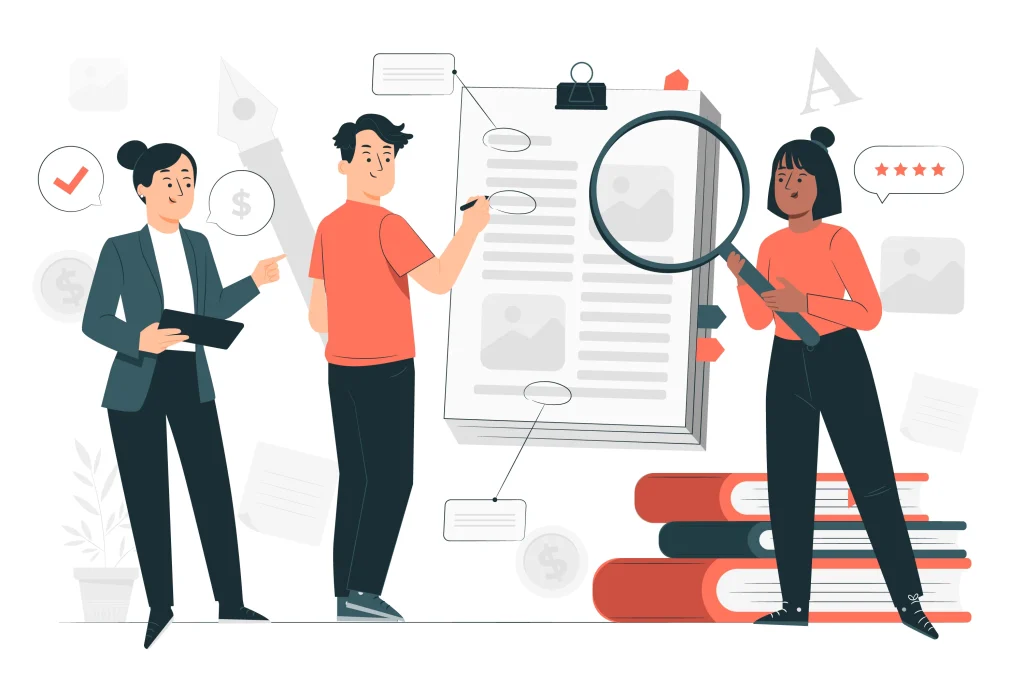
Legal Compliance
Legal compliance is a critical aspect of managing a startup’s human resources. It involves adhering to relevant labor laws, regulations, and employment standards to ensure fair and lawful treatment of employees. Here’s a detailed exploration of legal compliance considerations for startups:
1. Employment Contracts:
Ensure that employment contracts are drafted clearly and in compliance with local labor laws. Include essential details such as job responsibilities, compensation, working hours, termination clauses, and any other relevant terms and conditions. Consult with legal professionals to ensure the contracts are legally sound.
2. Anti-Discrimination Laws:
Understand and comply with anti-discrimination laws. This includes laws prohibiting discrimination based on race, gender, age, religion, disability, or other protected characteristics. Ensure that hiring, promotion, and termination decisions are made without discriminatory intent.
3. Minimum Wage and Overtime Laws:
Comply with minimum wage laws by ensuring that employees are paid at least the legally mandated minimum wage. Additionally, adhere to overtime laws by accurately tracking and compensating eligible employees for any overtime worked.
4. Working Hours and Breaks:
Abide by regulations related to working hours and breaks. Ensure that employees are not subjected to excessive working hours, and provide required breaks as per local laws. Familiarize yourself with specific regulations governing rest periods and meal breaks.
5. Leave Policies:
Develop leave policies that align with statutory requirements. This includes providing annual leave, sick leave, and other types of leave as mandated by local labor laws. Ensure that these policies are communicated clearly to employees.
6. Employee Classification:
Properly classify employees as either exempt or non-exempt based on job duties and responsibilities. Misclassification can lead to legal issues, especially regarding overtime pay. Consult with legal professionals to correctly categorize employees.
7. Safety and Health Regulations:
Adhere to workplace safety and health regulations to provide a safe working environment. This includes complying with occupational health and safety standards, conducting regular safety training, and addressing any hazards promptly.
8. Privacy and Data Protection:
Ensure compliance with privacy and data protection laws. Safeguard employee data and sensitive information, and inform employees about the collection, use, and protection of their personal information in accordance with applicable privacy laws.
9. Family and Medical Leave:
Understand and comply with family and medical leave laws. This includes providing eligible employees with job-protected leave for specific family or medical reasons and ensuring that the leave policies align with statutory requirements.
10. Employee Rights and Responsibilities:
Educate employees about their rights and responsibilities. This includes providing information about workplace rights, grievance procedures, and any employee protections granted by law.
11. Record-Keeping Requirements:
Maintain accurate and up-to-date records as required by law. This includes records related to employee hours worked, payroll, taxes, and other essential employment details. Adhering to record-keeping requirements ensures transparency and compliance.
12. Termination Procedures:
Follow proper termination procedures to avoid legal repercussions. Provide clear reasons for termination, adhere to notice periods as required by law, and ensure that the termination process complies with local regulations.
13. Immigration Compliance:
If hiring international employees, comply with immigration laws. Ensure that employees have the necessary work permits and visas to work in the country legally. Stay informed about any changes in immigration regulations.
14. Consultation with Legal Professionals:
Consult with legal professionals or employment law experts regularly to stay informed about changes in labor laws and regulations. Seeking legal advice helps ensure ongoing compliance and minimizes legal risks.
Startup founders should proactively address legal compliance considerations to establish a foundation of fairness, transparency, and legal adherence within the organization. This mitigates the risk of legal challenges and contributes to a positive and ethical workplace culture.

Adaptable Performance Management
Adaptable performance management is an approach that focuses on flexibility, continuous feedback, and ongoing development to meet the dynamic needs of a startup environment. Here’s a detailed exploration of adaptable performance management for startups:
1. Continuous Feedback Culture:
Encourage a culture of continuous feedback rather than relying solely on annual or bi-annual performance reviews. Regular check-ins between managers and employees provide timely insights, address concerns promptly, and foster open communication.
2. Agile Goal Setting:
Adopt agile goal-setting methodologies that align with the startup’s fast-paced nature. Set short-term goals that can be adjusted as priorities shift, allowing employees to stay focused on objectives that contribute to the company’s evolving strategy.
3. Real-Time Performance Metrics:
Leverage real-time performance metrics to track progress and provide instant feedback. Utilize key performance indicators (KPIs) and other relevant metrics to assess individual and team performance against strategic objectives.
4. Skill Development Plans:
Create individualized skill development plans for employees based on their current abilities and future aspirations. Identify areas for improvement and provide resources, training, or mentorship to help employees enhance their skills continually.
5. Peer-to-Peer Recognition:
Encourage peer-to-peer recognition to complement traditional top-down recognition. Colleagues are often in the best position to acknowledge each other’s contributions and efforts, fostering a positive and collaborative work culture.
6. Flexibility in Performance Metrics:
Be adaptable in defining performance metrics. Recognize that different roles and projects may require unique performance indicators. Tailor metrics to align with individual responsibilities and overall company goals.
7. Regular Performance Check-Ins:
Conduct regular, informal performance check-ins in addition to formal reviews. These discussions can cover achievements, challenges, and development opportunities, fostering a continuous dialogue about performance and growth.
8. Recognition of Adaptability:
Acknowledge and recognize adaptability as a key performance trait. In a startup environment, the ability to pivot, learn quickly, and adapt to changing circumstances is often as important as achieving specific targets.
9. Collaborative Performance Planning:
Involve employees in the performance planning process. Encourage them to contribute insights about their strengths, areas for development, and career aspirations. Collaborative planning promotes a sense of ownership and engagement.
10. Performance-Linked Rewards:
Implement performance-linked rewards and recognition programs. Tie bonuses, promotions, or other incentives directly to individual and team achievements. This reinforces the connection between performance and tangible rewards.
11. Employee Development Opportunities:
Integrate employee development opportunities into performance management. This could include cross-training, stretch assignments, or involvement in special projects that provide opportunities for learning and skill enhancement.
12. Individualized Recognition:
Tailor recognition to individual preferences. Some employees may appreciate public acknowledgment, while others prefer private recognition. Understanding and respecting these preferences contribute to a positive and personalized approach to performance management.
13. Focus on Strengths and Talents:
Emphasize the development of employees’ strengths and talents. While addressing areas for improvement is important, leveraging and enhancing strengths can lead to exceptional performance and job satisfaction.
14. Iterative Performance Reviews:
Move away from rigid annual performance reviews and adopt an iterative approach. Regularly revisit performance discussions, adapting goals and expectations based on changing circumstances and business priorities.
15. Learning Culture:
Promote a learning culture within the organization. Encourage employees to pursue continuous learning, share knowledge, and seek out opportunities for professional development that align with their roles and aspirations.
Adaptable performance management is about creating an environment that values agility, continuous improvement, and employee development. By embracing these principles, startups can build a performance management system that not only meets the current demands of the business but also prepares the organization for future challenges and opportunities.

Emphasis on Diversity and Inclusion
Emphasizing diversity and inclusion in the workplace is crucial for creating a positive, innovative, and equitable startup culture. Here’s a detailed exploration of how startups can promote diversity and inclusion:
1. Inclusive Hiring Practices:
Implement inclusive hiring practices to attract a diverse talent pool. Remove biases from job descriptions, use diverse interview panels, and actively seek candidates from underrepresented backgrounds. Promote a culture of diversity from the very start of the recruitment process.
2. Diversity Training:
Provide diversity and inclusion training for all employees. This training should raise awareness about unconscious biases, promote cultural competence, and foster a respectful and inclusive workplace. Make it an ongoing initiative to reinforce these principles.
3. Diverse Leadership Representation:
Strive for diverse leadership representation. Ensure that people from underrepresented groups have opportunities to advance into leadership roles. Diverse leadership provides role models, breaks stereotypes, and enhances decision-making by incorporating different perspectives.
4. Employee Resource Groups (ERGs):
Establish Employee Resource Groups or affinity groups that bring together employees with shared backgrounds, interests, or experiences. These groups provide a sense of community, support, and a platform for employees to contribute to the company’s diversity and inclusion initiatives.
5. Inclusive Policies and Benefits:
Review and adapt company policies to be inclusive. This includes parental leave policies, flexible work arrangements, and benefits that cater to diverse needs. Ensure that policies are communicated clearly to all employees.
6. Mentorship and Sponsorship Programs:
Implement mentorship and sponsorship programs to support the career development of underrepresented employees. Mentors provide guidance, while sponsors actively advocate for their mentees’ career advancement within the organization.
7. Regular Diversity and Inclusion Assessments:
Conduct regular assessments of diversity and inclusion within the organization. Collect demographic data, measure employee satisfaction, and identify areas for improvement. Use this information to set goals and track progress over time.
8. Transparent Communication:
Promote transparent communication about diversity and inclusion efforts. Share updates, successes, and challenges with employees to demonstrate the organization’s commitment to creating an inclusive workplace. Solicit feedback and involve employees in the process.
9. Accessibility and Accommodations:
Ensure that the workplace is accessible to individuals with diverse abilities. Provide reasonable accommodations and create an inclusive environment that considers the needs of employees with disabilities. This includes accessible facilities and technology.
10. Celebrate Cultural and Religious Diversity:
Acknowledge and celebrate cultural and religious diversity within the organization. Recognize and honor holidays, observances, and traditions from various cultures. This fosters a sense of belonging for employees of different backgrounds.
11. Zero-Tolerance for Discrimination:
Establish a zero-tolerance policy for discrimination and harassment. Clearly communicate the consequences of such behavior and provide reporting mechanisms for employees to raise concerns without fear of retaliation.
12. Fair Compensation Practices:
Ensure fair compensation practices by regularly reviewing pay equity within the organization. Address any disparities and promote a transparent approach to compensation to eliminate gender and race wage gaps.
13. Supplier Diversity:
Consider supplier diversity by working with vendors and partners that embrace diversity and inclusion. Supporting businesses owned by underrepresented groups contributes to a more inclusive ecosystem.
14. Community Engagement:
Engage with local communities and organizations that promote diversity and inclusion. Participate in events, sponsor initiatives, and collaborate with external groups to demonstrate the organization’s commitment to broader societal inclusivity.
15. Feedback and Continuous Improvement:
Encourage feedback from employees regarding diversity and inclusion initiatives. Use this feedback to continuously refine and improve policies and practices. This iterative approach ensures that the organization remains responsive to the evolving needs of its workforce.
By prioritizing diversity and inclusion, startups create a more vibrant and dynamic workplace and position themselves to attract top talent, foster innovation, and contribute positively to the broader social and business landscape.

Flexibility and Adaptability
Flexibility and adaptability are essential for startups operating in dynamic and rapidly changing environments. Here’s a detailed exploration of how startups can embrace flexibility and adaptability:
1. Agile Work Structures:
Implement agile work structures that allow for flexibility in roles and responsibilities. Encourage cross-functional collaboration and empower employees to take on diverse tasks based on business needs.
2. Remote and Hybrid Work Models:
Embrace remote and hybrid work models that provide flexibility in where and when employees work. This accommodates diverse working preferences, enhances work-life balance, and allows the organization to tap into talent beyond geographic constraints.
3. Cross-Training and Skill Development:
Encourage cross-training and skill development among employees. This not only ensures a versatile workforce but also equips individuals with the ability to adapt to changing job requirements.
4. Dynamic Goal Setting:
Adopt dynamic goal-setting processes that can be adjusted as business priorities evolve. Ensure that goals are aligned with the overall strategy, and regularly revisit and adapt them to respond to market changes.
5. Open Communication Channels:
Establish open communication channels that facilitate the free flow of information. Encourage employees to share ideas, feedback, and concerns. A transparent communication culture supports rapid adaptation to emerging challenges.
6. Rapid Decision-Making Processes:
Foster a culture of rapid decision-making. Empower employees at various levels to make informed decisions without unnecessary bureaucratic hurdles. Quick decision-making is crucial for adapting to market changes swiftly.
7. Continuous Learning Culture:
Promote a continuous learning culture where employees are encouraged to stay updated on industry trends, acquire new skills, and adapt to emerging technologies. Provide opportunities for professional development and training.
8. Flexible Project Management Approaches:
Adopt flexible project management approaches such as Agile or Scrum. These methodologies allow teams to respond quickly to changing project requirements and deliver incremental results.
9. Dynamic Team Structures:
Structure teams in a way that allows for easy reconfiguration based on project needs. This might involve creating cross-functional teams or project-based teams that can be assembled and disbanded as necessary.
10. Scenario Planning:
Engage in scenario planning to anticipate potential challenges and opportunities. Develop contingency plans that outline how the organization can adapt to different scenarios, ensuring preparedness for a range of potential outcomes.
11. Customer-Centric Approach:
Maintain a customer-centric approach. Stay attuned to customer feedback and market trends, and be willing to adjust products, services, or strategies based on changing customer needs.
12. Encourage Innovation:
Cultivate an environment that encourages innovation and experimentation. Establish mechanisms for employees to propose and test new ideas. Embrace a fail-fast, learn-fast mentality that allows the organization to adapt quickly.
13. Regular Strategy Reviews:
Conduct regular reviews of the company’s strategy. Evaluate the effectiveness of existing strategies and be willing to pivot if market conditions or internal factors indicate the need for a change in direction.
14. Cross-Functional Collaboration:
Encourage cross-functional collaboration and communication. Breaking down silos enables teams to share insights and respond collectively to challenges, fostering a more adaptable and interconnected organization.
15. External Partnerships and Networks:
Establish partnerships and networks with external organizations. Collaborating with other businesses, startups, or industry players can provide access to resources, expertise, and insights that enhance adaptability.
By embracing flexibility and adaptability, startups position themselves to navigate uncertainties, seize opportunities, and thrive in the ever-evolving business landscape. These qualities are fundamental for sustained success and resilience in the dynamic world of startups.

Employee Well-being and Mental Health
Prioritizing employee well-being and mental health is crucial for creating a supportive and sustainable workplace culture. Here’s a detailed exploration of how startups can focus on employee well-being and mental health:
1. Mental Health Awareness:
Promote mental health awareness within the organization. Conduct workshops, training sessions, or informational campaigns to educate employees about mental health, reduce stigma, and create an open environment for discussions.
2. Employee Assistance Programs (EAP):
Implement Employee Assistance Programs that offer confidential counseling and support services. EAPs provide employees with access to professional assistance for a range of issues, from stress and anxiety to personal challenges.
3. Flexible Work Arrangements:
Offer flexible work arrangements to support work-life balance. This could include options for remote work, flexible hours, or compressed workweeks. Flexibility helps alleviate stressors related to commuting or rigid schedules.
4. Wellness Programs:
Introduce wellness programs that address physical and mental well-being. These programs may include fitness classes, mindfulness sessions, wellness challenges, or access to health and wellness resources.
5. Mental Health Days:
Recognize the importance of mental health days. Allow employees to take time off when needed for mental health reasons without the stigma associated with sick leave. Promote a culture that values self-care and recognizes that everyone needs a break.
6. Regular Check-Ins:
Conduct regular check-ins with employees to gauge their well-being. These check-ins can be one-on-one meetings with managers or informal team discussions. Creating a space for open communication helps identify potential issues early on.
7. Stress Management Resources:
Provide resources and tools for stress management. This may include access to stress reduction workshops, meditation apps, or other resources that support employees in managing stress and maintaining mental well-being.
8. Clear Communication Channels:
Maintain clear communication channels for employees to express concerns or seek support. Ensure that employees know how and where to access resources for mental health assistance, and actively encourage them to use these channels.
9. Training for Managers:
Provide training for managers on recognizing signs of mental health issues, offering support, and fostering a positive and inclusive team culture. Equipping managers with the tools to address mental health concerns contributes to a supportive work environment.
10. Establish Boundaries:
Encourage the establishment of healthy work-life boundaries. Discourage a culture of excessive overtime or constant connectivity, and promote breaks to prevent burnout. Respect employees’ personal time and days off.
11. Peer Support Networks:
Facilitate peer support networks within the organization. Encourage employees to check in on each other, share experiences, and provide support. Peer connections can play a crucial role in fostering a sense of community and understanding.
12. Mental Health First Aid Training:
Consider offering Mental Health First Aid training to designated employees. This training equips individuals to provide initial support to someone experiencing a mental health crisis or struggling with mental health challenges.
13. Provide Resources:
Ensure that employees have access to mental health resources, such as counseling services, helplines, or mental health apps. Make this information easily accessible and actively promote the availability of these resources.
14. Encourage Breaks and Time Off:
Promote the importance of taking breaks and utilizing vacation time. Discourage a culture of overworking, as chronic stress and burnout can significantly impact mental health. Encourage employees to recharge and prioritize their well-being.
15. Regular Evaluation of Initiatives:
Regularly evaluate the effectiveness of well-being and mental health initiatives. Solicit feedback from employees, analyze utilization of resources, and make adjustments as needed. Continuous improvement ensures that the organization remains responsive to employee needs.
By fostering a workplace culture that prioritizes employee well-being and mental health, startups not only support the health and happiness of their workforce but also contribute to increased productivity, employee retention, and overall organizational success.

Succession Planning
Succession planning is a strategic process that involves identifying and developing individuals within an organization to assume key roles and responsibilities in the future. It ensures a smooth transition of leadership and critical positions in the event of retirements, resignations, promotions, or unforeseen circumstances. Here’s a detailed exploration of succession planning:
1. Identify Key Positions:
Start by identifying critical roles within the organization. These are positions that significantly impact the company’s performance, strategy, and overall success. Key positions can include executive leadership, senior management, and other roles crucial for business continuity.
2. Identify Successors:
Identify potential successors for each key position. Successors are individuals with the skills, competencies, and potential to take on higher-level roles. Consider both internal candidates and external talent, and evaluate their readiness for future leadership responsibilities.
3. Talent Assessment:
Conduct a comprehensive talent assessment to evaluate the skills, strengths, and developmental areas of potential successors. This assessment may involve performance reviews, 360-degree feedback, and discussions about career aspirations and growth opportunities.
4. Leadership Development:
Implement leadership development programs to groom potential successors. Offer training, mentorship, coaching, and exposure to different aspects of the business. Provide opportunities for individuals to acquire the skills necessary for future leadership roles.
5. Career Pathing:
Work with employees to define clear career paths within the organization. Communicate the potential progression from their current roles to higher-level positions, aligning these paths with the strategic goals of the startup.
6. Knowledge Transfer:
Encourage knowledge transfer between current leaders and potential successors. Create mechanisms for the sharing of institutional knowledge, skills, and insights to ensure a smooth transition when succession events occur.
7. Succession Planning Committee:
Establish a succession planning committee or task force responsible for overseeing the succession planning process. This committee can include senior executives, HR professionals, and other key stakeholders who collaborate to identify, assess, and develop potential successors.
8. Regular Reviews and Updates:
Regularly review and update the succession plan to adapt to changing business needs and organizational dynamics. Succession planning is an ongoing process that should be flexible and responsive to evolving circumstances.
9. Inclusion of Diversity:
Ensure diversity and inclusion in succession planning efforts. Consider candidates from diverse backgrounds and perspectives to promote a well-rounded leadership team that reflects the diversity of the workforce and the broader community.
10. Bench Strength Analysis:
Conduct a bench strength analysis to evaluate the overall readiness of the organization for potential leadership transitions. Assess the depth and quality of talent available to fill key roles and address any gaps through targeted development initiatives.
11. Communication and Transparency:
Communicate the importance of succession planning to employees at all levels. Transparency about the organization’s commitment to talent development and succession planning fosters a positive and inclusive culture.
12. Emergency Succession Planning:
Develop contingency plans for emergency succession situations, such as sudden departures or unexpected events. Having a plan in place for unforeseen circumstances ensures a swift and coordinated response to maintain organizational stability.
13. Employee Engagement:
Engage employees in the succession planning process by involving them in discussions about their career aspirations and development goals. Encourage a culture of continuous learning and advancement.
14. Monitor External Talent Trends:
Stay informed about external talent trends and industry developments. This awareness allows the organization to proactively identify potential external candidates who could contribute to its leadership pipeline.
15. Evaluate and Celebrate Succession Success:
Evaluate the success of succession planning initiatives by monitoring the performance and growth of individuals who have transitioned into leadership roles. Celebrate success stories and use them to reinforce the importance of succession planning throughout the organization.
By systematically addressing succession planning, startups can mitigate risks associated with leadership gaps, enhance organizational resilience, and create a talent pipeline that supports long-term success and sustainability.

Social Responsibility
Social responsibility, often referred to as corporate social responsibility (CSR) or corporate citizenship, is a concept that involves businesses and organizations taking voluntary actions to contribute to the well-being of society and the environment. It goes beyond the primary goal of generating profits and encompasses a broader commitment to ethical, sustainable, and socially impactful practices. Here’s a detailed exploration of social responsibility:
1. Ethical Business Practices:
Embed ethical considerations into all aspects of business operations. This includes fair and transparent business practices, honest marketing, and ethical treatment of employees, customers, and stakeholders.
2. Environmental Sustainability:
Implement environmentally sustainable practices to minimize the ecological impact of business activities. This can involve reducing carbon emissions, conserving resources, adopting renewable energy sources, and minimizing waste generation.
3. Social Impact Initiatives:
Engage in social impact initiatives that address pressing societal issues. This can include philanthropy, community development projects, and partnerships with non-profit organizations working on causes aligned with the company’s values.
4. Diversity and Inclusion:
Promote diversity and inclusion within the organization. Create a workplace culture that values and celebrates differences in gender, ethnicity, age, and other characteristics. Ensure equal opportunities for all employees.
5. Employee Well-being:
Prioritize the well-being of employees by offering benefits such as healthcare, mental health support, work-life balance initiatives, and opportunities for professional development. A healthy and engaged workforce contributes positively to the community.
6. Supply Chain Responsibility:
Assess and ensure responsible practices throughout the supply chain. This involves working with suppliers who uphold ethical and sustainable standards, including fair labor practices and environmental responsibility.
7. Responsible Product Development:
Develop products and services with consideration for their impact on society and the environment. This may involve using sustainable materials, ensuring product safety, and designing products that address societal needs.
8. Transparency and Accountability:
Practice transparency in business operations, disclosing relevant information about practices, policies, and impacts. Hold the organization accountable for its commitments to social responsibility and respond proactively to stakeholder concerns.
9. Stakeholder Engagement:
Engage with stakeholders, including employees, customers, local communities, and investors, to understand their perspectives and expectations. This involvement helps in shaping responsible business strategies that align with stakeholder values.
10. Responsible Marketing:
Adopt responsible marketing practices that avoid deceptive advertising, respect consumer privacy, and promote truthful representation of products and services.
11. Ethical Leadership:
Foster a culture of ethical leadership within the organization. Leaders should model ethical behavior, uphold values, and make decisions that consider the long-term impact on both the organization and society.
12. Volunteering and Employee Engagement:
Encourage employees to participate in volunteer activities and community service. Supporting employees in giving back to their communities fosters a sense of social responsibility and community engagement.
13. Stakeholder Listening and Feedback:
Actively seek feedback from stakeholders to understand their concerns and expectations regarding the company’s social responsibility initiatives. This feedback loop helps in refining and improving the impact of these initiatives.
14. Global Citizenship:
Acknowledge the global impact of business activities and operate as a responsible global citizen. Consider the social and environmental implications of operations across different regions and cultures.
15. Continuous Improvement:
Commit to continuous improvement in social responsibility practices. Regularly assess the effectiveness of initiatives, set new goals, and adapt strategies to address emerging challenges and opportunities.
By embracing social responsibility, startups can contribute positively to their communities, build trust with customers and stakeholders, attract socially conscious talent, and create long-term value beyond financial performance. Social responsibility is increasingly recognized as a fundamental element of responsible and sustainable business practices.

Employee Engagement Initiatives
Employee engagement initiatives are designed to foster a positive, collaborative, and fulfilling work environment, where employees feel motivated, connected, and invested in their roles and the overall success of the organization. Here’s a detailed exploration of various employee engagement initiatives:
1. Onboarding Programs:
Create comprehensive onboarding programs for new hires. These programs should include introductions to the company culture, values, team members, and an overview of the organization’s mission and goals.
2. Employee Recognition Programs:
Implement employee recognition programs to acknowledge and appreciate individual and team achievements. This can include employee of the month awards, peer recognition platforms, or other forms of acknowledgment for outstanding contributions.
3. Professional Development Opportunities:
Provide opportunities for professional growth and development. Offer training programs, workshops, mentorship initiatives, and access to resources that empower employees to enhance their skills and advance in their careers.
4. Regular Feedback and Performance Reviews:
Establish a culture of continuous feedback through regular performance reviews and check-ins. Encourage managers to provide constructive feedback and recognize accomplishments, fostering open communication and employee development.
5. Wellness Programs:
Promote employee well-being through wellness programs that address physical, mental, and emotional health. This can include fitness challenges, mindfulness sessions, access to wellness resources, and initiatives that support a healthy work-life balance.
6. Flexible Work Arrangements:
Offer flexible work arrangements, such as remote work options, flexible hours, or compressed workweeks. Flexibility contributes to employee satisfaction and helps balance professional and personal commitments.
7. Social Events and Team-building Activities:
Organize social events and team-building activities to strengthen relationships among team members. This can include team lunches, offsite retreats, or collaborative projects that encourage camaraderie and collaboration.
8. Employee Surveys and Feedback:
Conduct regular employee surveys to gather feedback on workplace satisfaction, engagement levels, and areas for improvement. Act on the feedback received to demonstrate a commitment to addressing employee concerns and enhancing the work environment.
9. Employee Resource Groups (ERGs):
Establish Employee Resource Groups or affinity groups that bring together employees with shared interests, backgrounds, or goals. ERGs provide a sense of community, support, and opportunities for networking.
10. Leadership Development Programs:
Offer leadership development programs to nurture future leaders within the organization. This can include leadership training, mentorship opportunities, and exposure to strategic decision-making processes.
11. Corporate Social Responsibility (CSR) Initiatives:
Engage employees in corporate social responsibility initiatives that contribute to community service or charitable causes. Involvement in meaningful initiatives fosters a sense of purpose and community impact.
12. Transparent Communication:
Maintain transparent communication channels to keep employees informed about company updates, strategic goals, and any changes that may impact them. Transparent communication builds trust and a sense of shared purpose.
13. Employee Assistance Programs (EAP):
Implement Employee Assistance Programs that provide confidential counseling and support services for employees facing personal or work-related challenges. EAPs contribute to overall well-being and mental health support.
14. Innovation and Idea Generation Platforms:
Encourage employees to contribute ideas and innovations through dedicated platforms. Recognize and implement valuable suggestions, demonstrating that the organization values and appreciates the input of its employees.
15. Celebrate Milestones and Achievements:
Celebrate organizational milestones, project completions, and individual achievements. This can be done through company-wide announcements, recognition ceremonies, or small gatherings that acknowledge and appreciate successes.
By implementing a combination of these employee engagement initiatives, startups can create a positive and fulfilling work environment, enhance team morale, and contribute to the overall success and growth of the organization. Employee engagement is a dynamic process that requires ongoing attention and adaptation to the evolving needs of the workforce.
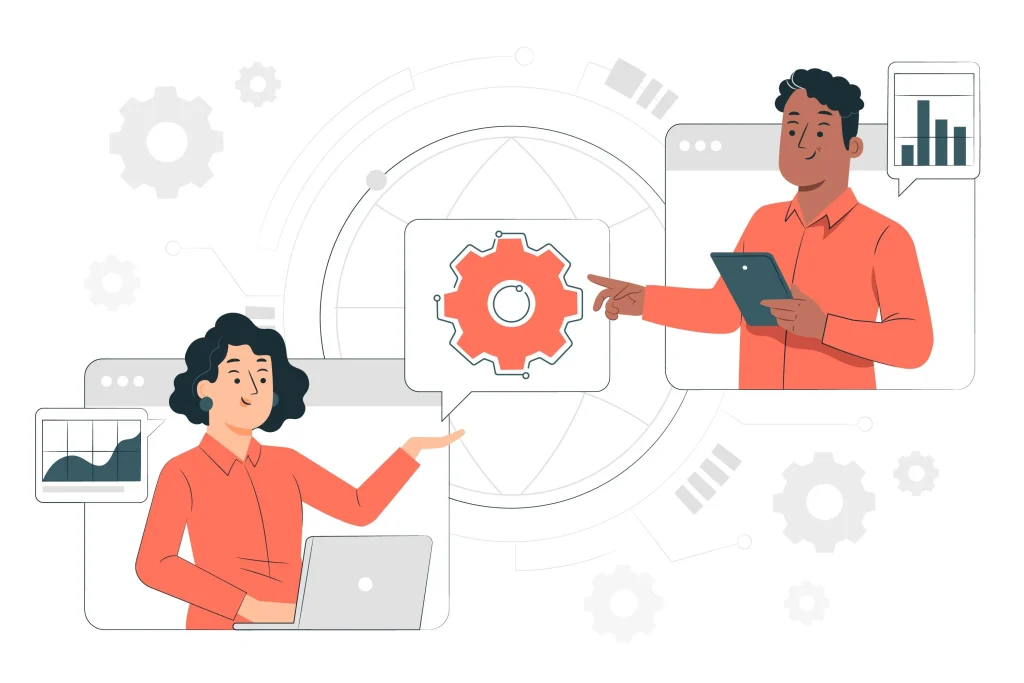
Technology Integration in HR Practices
Integrating technology into HR practices, often referred to as HR tech, is a transformative approach that leverages digital tools and platforms to streamline processes, enhance efficiency, and improve overall human resource management. Here’s a detailed exploration of how technology integration can impact various HR practices:
1. Recruitment and Applicant Tracking Systems (ATS):
- Job Postings and Candidate Sourcing: Use technology to automate job postings on various platforms and leverage AI tools for candidate sourcing.
- ATS Platforms: Implement Applicant Tracking Systems for efficient candidate management, automated resume parsing, and streamlined communication with applicants.
2. Onboarding and Employee Lifecycle Management:
- Electronic Onboarding: Utilize digital onboarding processes, including e-signatures and online documentation, to streamline new employee orientation.
- HR Information Systems (HRIS): Implement HRIS to centralize employee data, manage personnel files, and automate routine HR tasks throughout the employee lifecycle.
3. Learning and Development:
- Learning Management Systems (LMS): Adopt LMS for training programs, e-learning modules, and tracking employee progress in professional development.
- Online Training Platforms: Leverage online training platforms for continuous learning, offering employees access to courses and resources.
4. Performance Management:
- Performance Evaluation Tools: Implement performance management tools for setting goals, tracking progress, and conducting performance reviews.
- 360-Degree Feedback Systems: Use technology to facilitate 360-degree feedback processes, providing a holistic view of employee performance.
5. Employee Engagement and Surveys:
- Pulse Surveys: Conduct regular pulse surveys using online tools to gauge employee engagement and satisfaction.
- Employee Engagement Platforms: Utilize engagement platforms that offer features like recognition programs, feedback mechanisms, and social collaboration tools.
6. HR Analytics and Reporting:
- Data Analytics Tools: Implement HR analytics tools to analyze workforce trends, identify areas for improvement, and make data-driven decisions.
- Customized HR Dashboards: Create customized dashboards that provide real-time insights into key HR metrics.
7. Compensation and Benefits Management:
- Compensation Software: Use compensation management software for salary benchmarking, incentive management, and ensuring fair and competitive pay structures.
- Benefits Administration Systems: Streamline benefits enrollment, administration, and communication through dedicated benefits administration platforms.
8. Time and Attendance Tracking:
- Time Tracking Apps: Implement time-tracking applications for accurate attendance records and efficient payroll processing.
- Biometric Systems: Utilize biometric systems for secure and reliable attendance tracking.
9. Mobile HR Applications:
- Mobile HR Platforms: Develop or adopt mobile applications for HR tasks, allowing employees to access information, submit requests, and complete HR-related actions from their mobile devices.
10. Remote Work Solutions:
- Collaboration Tools: Utilize collaboration platforms and communication tools for remote team collaboration.
- Remote Employee Monitoring: Implement tools that enable remote employee monitoring while respecting privacy and ensuring ethical use.
11. Chatbots and Virtual Assistants:
- HR Chatbots: Integrate chatbots into HR processes to handle routine inquiries, assist with onboarding, and provide instant responses to employee queries.
- Virtual Assistants: Utilize virtual assistants to automate administrative tasks, schedule interviews, or answer frequently asked questions.
12. Compliance and Risk Management:
- Compliance Software: Implement compliance management tools to stay abreast of legal requirements, track regulatory changes, and ensure HR practices adhere to relevant laws.
13. Succession Planning and Talent Management:
- Talent Management Systems: Implement talent management systems that include modules for succession planning, talent identification, and career development.
- Skill Assessment Platforms: Leverage technology to assess and track employees’ skills and competencies.
14. Integration with External Platforms:
- Integration with Payroll and Finance Systems: Ensure seamless integration between HR systems and payroll/finance software to streamline financial processes.
- Integration with Recruitment Platforms: Integrate HR systems with recruitment platforms for a unified approach to talent acquisition and management.
15. Cybersecurity Measures:
- Data Security Protocols: Implement robust cybersecurity measures to protect sensitive HR data, ensuring the privacy and confidentiality of employee information.
Technology integration in HR practices is an ongoing process that requires strategic planning, employee training, and a commitment to staying updated with emerging trends and innovations. The adoption of technology not only enhances efficiency but also contributes to a more engaging and employee-centric workplace.

Continuous Learning Culture
A continuous learning culture refers to an organizational environment where learning and development are embraced as ongoing, integral components of the workplace. This culture encourages employees at all levels to continuously learn, acquire new skills, and stay updated on industry trends. Here’s a detailed exploration of the key elements that contribute to a continuous learning culture:
1. Leadership Support:
Leadership plays a crucial role in fostering a continuous learning culture. Leaders actively supporting and participating in learning initiatives set a positive example for the entire organization. Leaders should communicate the importance of learning, allocate resources, and promote a growth mindset.
2. Learning Opportunities:
Provide diverse learning opportunities for employees, including training programs, workshops, webinars, online courses, and access to educational resources. These opportunities should cover both job-specific skills and broader professional development areas.
3. Learning Platforms and Technologies:
Leverage learning platforms and technologies to facilitate accessible and engaging learning experiences. Learning Management Systems (LMS), online courses, e-learning modules, and collaboration tools contribute to the flexibility and scalability of continuous learning initiatives.
4. Cross-Functional Training:
Encourage cross-functional training to broaden employees’ skill sets. This involves providing opportunities for individuals to learn about and collaborate with departments beyond their own, fostering a more versatile and interconnected workforce.
5. Mentorship and Coaching Programs:
Implement mentorship and coaching programs that connect experienced employees with those seeking guidance and growth. Mentorship facilitates knowledge transfer and supports the development of both technical and soft skills.
6. Recognition of Learning Achievements:
Acknowledge and recognize employees’ learning achievements. Celebrate milestones, completion of courses, and the acquisition of new skills. Recognition reinforces the value placed on continuous learning within the organization.
7. Goal Alignment with Learning:
Integrate learning goals with individual and organizational objectives. Aligning learning initiatives with strategic goals ensures that employees acquire skills that directly contribute to the company’s success.
8. Continuous Feedback and Improvement:
Establish mechanisms for continuous feedback on learning initiatives. Regularly assess the effectiveness of programs, gather employee input, and make adjustments to ensure continuous improvement in the learning culture.
9. Learning Communities and Forums:
Create learning communities or forums where employees can share insights, discuss challenges, and collaborate on learning projects. Peer-to-peer learning fosters a sense of community and encourages a culture of knowledge sharing.
10. Learning Budgets:
Allocate budgets specifically for employee learning and development. Providing financial support for courses, certifications, and workshops demonstrates the organization’s commitment to investing in the growth of its workforce.
11. Self-Directed Learning:
Encourage self-directed learning by empowering employees to take ownership of their development. While offering resources, tools, and guidance, these organizations also allow individuals the autonomy to pursue learning paths that align with their interests and career goals.
12. Learning Culture Integration with Performance Management:
Integrate learning achievements into the performance management process. Recognize and reward employees for their commitment to continuous learning during performance evaluations, reinforcing the link between learning and professional growth.
13. Learning Metrics and Analytics:
Use metrics and analytics to measure the impact of learning initiatives. Track completion rates, employee engagement with learning materials, and applying new skills on the job. Data-driven insights help refine learning strategies.
14. Learning Challenges and Gamification:
Introduce learning challenges and gamification elements to make the learning experience more engaging. Incorporate quizzes, competitions, and rewards to motivate employees to participate in continuous learning actively.
15. Learning as a Core Value:
Position learning as a core organizational value. Embed it in the company’s mission and values to emphasize its significance. A culture where learning is integral becomes a part of the organizational DNA.
A continuous learning culture is about acquiring new skills and fostering a mindset that values curiosity, adaptability, and a commitment to improvement. By creating an environment that encourages and supports continuous learning, organizations position themselves to adapt to change, stay competitive, and cultivate a workforce that thrives in a dynamic business landscape.

Clear Onboarding Process
A clear onboarding process is a structured and organized to welcoming and integrating new employees into the workplace. It is a critical component of the employee experience, setting the tone for their journey within the organization. Here’s a detailed exploration of the key elements that contribute to a clear onboarding process:
1. Pre-Onboarding Communication:
- Welcome Communication: Send a warm and personalized welcome message to the new employee before their first day, including essential details such as start time, location, and any pre-arrival preparations.
2. Preparing the Workspace:
- Workstation Setup: Ensure the new employee’s workstation or workspace is ready before their arrival. This includes providing necessary equipment, access to technology, and any materials they may need.
3. Compliance and Documentation:
- Legal and Compliance Documents: Provide new employees with all necessary legal and compliance documents in advance. This may include employment contracts, tax forms, and other essential paperwork.
4. Introduction to Company Culture:
- Company Handbook: Share the company handbook or a detailed document that outlines the organization’s culture, values, policies, and expectations. This provides new employees with insights into the workplace culture.
5. Welcome Kit:
- Welcome Package: Prepare a welcome kit or package containing essential information, company merchandise, and any items that might help new employees feel more connected to the organization.
6. Day 1 Orientation:
- Introduction to Team: Facilitate introductions to team members and key stakeholders on the first day. Arrange a brief team meeting or welcome session to help new employees feel integrated into their immediate work environment.
7. Company Overview:
- Company Overview Session: Conduct a comprehensive company overview session covering the history, mission, values, and organizational structure. This helps new employees understand the bigger picture and their role within the company.
8. Job Role and Responsibilities:
- Detailed Job Overview: Provide a detailed overview of the new employee’s job role and responsibilities. Clarify expectations, goals, and key performance indicators relevant to their position.
9. Training and Skill Development:
- Training Programs: Implement training programs tailored to the new employee’s role. This may include software training, job-specific skills development, and other relevant learning opportunities.
10. IT and Security Training:
- IT Security Training: Provide training on IT security protocols, including data protection, password policies, and other cybersecurity measures to ensure the new employee is aware of and adheres to organizational security standards.
11. Mentorship and Buddy System:
- Mentor or Buddy Assignment: Assign a mentor or buddy to the new employee. This individual can provide guidance, answer questions, and help the new employee navigate their initial days in the organization.
12. Introduction to Tools and Resources:
- Technology Orientation: Introduce new employees to the tools and software they will be using regularly. Ensure they have access to necessary resources and know how to navigate the company’s intranet or communication platforms.
13. Probation Period Review:
- Probation Period Discussion: Clarify the expectations and performance review process during the probationary period. Provide information on performance metrics and milestones.
14. Feedback and Check-Ins:
- Regular Check-Ins: Schedule regular check-ins with the new employee to gather feedback, address any concerns, and ensure they adjust well to their new role and the organization.
15. Social Integration Activities:
- Team Building Activities: Organize social integration or team-building events to help new employees build connections with colleagues and feel a sense of belonging within the organization.
A clear onboarding process should be a well-organized and holistic experience that imparts the necessary information and focuses on creating a positive and welcoming environment for new employees. Organizations can set the stage for employee success and long-term engagement by investing time and effort in a thoughtful onboarding process.

Agile Decision-Making
Agile decision-making is a dynamic and iterative approach to making decisions that align with the principles of Agile methodology. Agile, originally developed for software development, emphasizes flexibility, collaboration, and adaptability to respond to changing circumstances. Applying Agile principles to decision-making extends these values beyond development processes. Here’s a detailed exploration of agile decision-making:
1. Iterative Process:
- Key Feature: Decision-making is viewed as an iterative process.
- Explanation: Rather than making a single, final decision, Agile recognizes that circumstances may change, and decisions might need to be revisited and adjusted over time. This iterative nature allows for continuous improvement.
2. Cross-Functional Collaboration:
- Key Feature: Involvement of cross-functional teams.
- Explanation: Agile decision-making encourages collaboration among individuals with diverse skills and perspectives. Cross-functional teams contribute their expertise, fostering a more comprehensive understanding of the decision’s implications.
3. Incremental Progress:
- Key Feature: Decisions are made incrementally.
- Explanation: Rather than aiming for a comprehensive decision from the outset, Agile decision-making allows for incremental progress. Decisions can be made step by step, adapting as new information becomes available.
4. Data-Driven Decision-Making:
- Key Feature: Reliance on data and evidence.
- Explanation: Agile decision-making emphasizes data-driven approaches. Decisions are informed by relevant metrics, feedback, and empirical evidence, reducing reliance on intuition alone.
5. Rapid Decision-Making:
- Key Feature: Quick decision cycles.
- Explanation: Agile decision-making promotes swift and timely choices. This ensures that decisions are made promptly, facilitating a responsive and adaptive approach to changes in the business environment.
6. Transparent Decision-Making Process:
- Key Feature: Transparency in decision-making.
- Explanation: Agile teams communicate openly about the decision-making process. This transparency ensures that team members are informed and can contribute their insights, fostering a culture of shared understanding.
7. Flexibility and Adaptability:
- Key Feature: Adaptability to change.
- Explanation: Agile decision-making embraces the reality that conditions can change rapidly. Decisions are made with an awareness that adjustments might be necessary, and the process remains flexible to accommodate such changes.
8. Feedback Loops:
- Key Feature: Continuous feedback loops.
- Explanation: Regular feedback is sought and incorporated throughout the decision-making process. This allows for adjustments based on evolving circumstances and ensures that decisions remain aligned with organizational goals.
9. Empowered Teams:
- Key Feature: Empowerment of teams to make decisions.
- Explanation: Agile decision-making decentralizes the decision-making authority. Teams are empowered to make decisions within their areas of expertise, fostering a sense of ownership and accountability.
10. Minimal Viable Decision (MVD):
- Key Feature: Striving for the minimum viable decision.
- Explanation: Agile decision-making seeks the minimum amount of information necessary to make a decision, avoiding unnecessary delays. This aligns with the Agile principle of delivering the minimum viable product to achieve faster delivery.
11. Retrospectives and Continuous Improvement:
- Key Feature: Regular retrospectives.
- Explanation: Agile encourages teams to conduct retrospectives to reflect on their decisions and processes. Continuous improvement is emphasized, and lessons learned from past decisions are used to enhance future decision-making.
12. Risk Tolerance:
- Key Feature: Tolerance for calculated risks.
- Explanation: Agile decision-making acknowledges that taking calculated risks is essential for innovation and progress. Teams are encouraged to assess risks and make decisions that contribute to the organization’s overall objectives.
13. Decision Ownership:
- Key Feature: Clearly defined decision ownership.
- Explanation: Each decision has a designated owner responsible for its implementation. This ownership ensures accountability and clarity regarding who is driving the decision forward.
Agile decision-making is well-suited for fast-paced and dynamic environments where traditional, linear decision-making processes may fall short. By embracing agility in decision-making, organizations can respond effectively to changes, seize opportunities, and continuously adapt to evolving conditions.
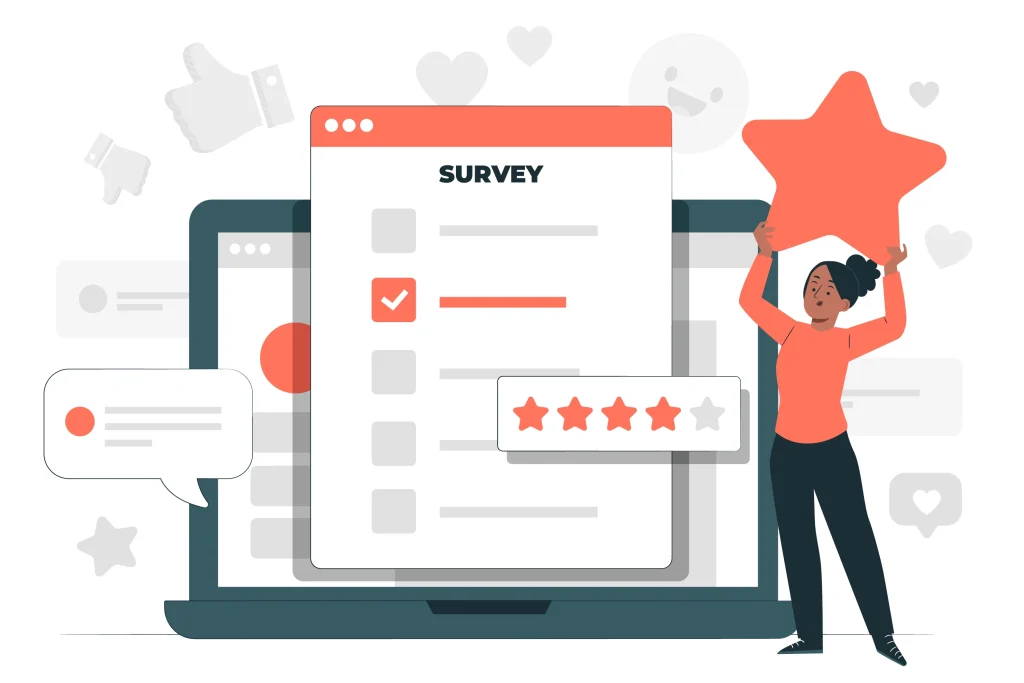
Employee Feedback Mechanism
An employee feedback mechanism is an organization’s structured process or system designed to collect, analyze, and act upon employee feedback. This mechanism is crucial for fostering a culture of continuous improvement, enhancing employee engagement, and addressing concerns or suggestions the workforce raises. Here’s a detailed exploration of the key elements involved in an effective employee feedback mechanism:
1. Regular Feedback Channels:
- Key Feature: Various channels for feedback.
- Explanation: Establish multiple channels through which employees can provide feedback. This can include surveys, suggestion boxes, one-on-one meetings, focus groups, and digital platforms. Offering diverse channels ensures that employees can choose the method that suits them best.
2. Open and Transparent Communication:
- Key Feature: Open communication channels.
- Explanation: Create a culture of open and transparent communication where employees feel comfortable sharing their thoughts and opinions without fear of reprisal. Leaders should encourage honesty and actively seek employee input.
3. Anonymous Feedback Option:
- Key Feature: Anonymous feedback provision.
- Explanation: Provide the option for employees to submit feedback anonymously. This can encourage candid responses, especially for sensitive topics or concerns that employees may be hesitant to share openly.
4. Continuous Pulse Surveys:
- Key Feature: Regular pulse surveys.
- Explanation: Implement short and frequent pulse surveys to gather real-time feedback on specific issues or general employee sentiment. These surveys are quick, targeted, and help organizations stay informed about employee satisfaction and engagement levels.
5. Performance Reviews and Check-Ins:
- Key Feature: Feedback incorporated into performance reviews.
- Explanation: Integrate feedback discussions into regular performance reviews and check-ins. This ensures that feedback is part of an ongoing conversation about professional development and growth.
6. 360-Degree Feedback:
- Key Feature: Multi-source feedback.
- Explanation: Implement a 360-degree feedback system where employees receive input from peers, subordinates, and supervisors. This holistic feedback approach provides a more comprehensive view of an employee’s performance and behavior.
7. Employee Surveys with Actionable Insights:
- Key Feature: Surveys with actionable insights.
- Explanation: Design employee surveys with clear objectives and questions that yield actionable insights. Analyze the survey results and use them to implement meaningful changes based on the feedback received.
8. Real-Time Feedback Tools:
- Key Feature: Real-time feedback tools.
- Explanation: Use digital platforms and tools that facilitate real-time feedback. This could include instant messaging systems, feedback apps, or collaboration platforms that enable continuous communication and feedback exchange.
9. Employee Feedback Committees:
- Key Feature: Employee feedback committees.
- Explanation: Form committees or groups dedicated to collecting, analyzing, and acting upon employee feedback. These committees can represent various departments and ensure that feedback is effectively communicated to leadership.
10. Recognition and Appreciation:
- Key Feature: Recognition of valuable feedback.
- Explanation: Acknowledge and appreciate employees for providing valuable feedback. Recognition reinforces a culture where feedback is seen as a constructive contribution to the organization’s improvement.
11. Feedback Training for Managers:
- Key Feature: Managerial training on feedback.
- Explanation: Provide training for managers on giving and receiving feedback effectively. Equip them with the skills to encourage open communication and respond constructively to employee input.
12. Trend Analysis and Benchmarking:
- Key Feature: Trend analysis and benchmarking.
- Explanation: Analyze feedback trends over time and benchmark against industry standards. This helps identify areas of improvement, track progress, and ensure that the organization is staying competitive in terms of employee satisfaction.
13. Continuous Improvement Initiatives:
- Key Feature: Actionable initiatives based on feedback.
- Explanation: Act on the feedback received by implementing tangible initiatives for improvement. Communicate to employees the specific actions taken as a result of their feedback, demonstrating the organization’s commitment to positive change.
14. Open-Door Policy:
- Key Feature: Open-door policy for feedback.
- Explanation: Encourage an open-door policy where employees can approach leaders at any level to share their feedback, concerns, or suggestions. This accessibility fosters a culture of approachability and responsiveness.
15. Data Privacy and Confidentiality:
- Key Feature: Respect for privacy and confidentiality.
- Explanation: Ensure that the feedback mechanism respects employee privacy and confidentiality. Clearly communicate how feedback will be used, stored, and protected, building trust in the process.
An effective employee feedback mechanism is not just about collecting feedback but also about creating a culture where feedback is valued, acted upon, and contributes to the overall improvement of the workplace. Regularly assessing and refining the feedback process ensures its relevance and effectiveness in promoting a positive work environment.

Collaboration and Team Building
Collaboration and team building are critical components of a successful and productive workplace. They foster positive relationships, effective communication, and a shared sense of purpose among team members. Here’s a detailed exploration of the key elements involved in collaboration and team building:
1. Clear Team Goals and Objectives:
- Key Feature: Defined team goals.
- Explanation: Clearly articulate the team’s goals and objectives. Team members should have a shared understanding of the collective mission, enabling them to work towards common outcomes.
2. Open Communication:
- Key Feature: Transparent communication.
- Explanation: Encourage open and honest communication within the team. Create an environment where team members feel comfortable expressing their ideas, concerns, and feedback.
3. Regular Team Meetings:
- Key Feature: Scheduled team meetings.
- Explanation: Hold regular team meetings to discuss progress, share updates, and address any challenges. These meetings provide a platform for collaboration and ensure that everyone is on the same page.
4. Team-building Activities:
- Key Feature: Organized team-building activities.
- Explanation: Plan and implement team-building activities to strengthen relationships, improve communication, and foster a sense of camaraderie among team members. These activities can be both formal and informal.
5. Diversity and Inclusion:
- Key Feature: Embrace diversity.
- Explanation: Foster a culture of diversity and inclusion within the team. Recognize and value the unique perspectives, backgrounds, and strengths that each team member brings to the table.
6. Clear Roles and Responsibilities:
- Key Feature: Defined roles and responsibilities.
- Explanation: Ensure that each team member understands their role and responsibilities within the team. Clarity helps avoid confusion and promotes accountability.
7. Collaborative Tools and Technology:
- Key Feature: Use of collaborative tools.
- Explanation: Implement technology and tools that facilitate collaboration. This can include project management software, communication platforms, and shared document repositories.
8. Recognition and Appreciation:
- Key Feature: Acknowledgment of contributions.
- Explanation: Recognize and appreciate the contributions of individual team members. Regular acknowledgment boosts morale and reinforces the value of teamwork.
9. Team Norms and Agreements:
- Key Feature: Established team norms.
- Explanation: Define team norms and agreements that outline expected behavior, communication protocols, and conflict resolution strategies. This helps create a positive team culture.
10. Trust-building Activities:
- Key Feature: Activities to build trust.
- Explanation: Engage in trust-building activities that allow team members to get to know each other on a personal level. Trust is foundational for effective collaboration.
11. Problem-solving Skills:
- Key Feature: Encouragement of problem-solving.
- Explanation: Foster problem-solving skills within the team. Encourage a mindset that views challenges as opportunities for collective problem-solving rather than individual blame.
12. Flexibility and Adaptability:
- Key Feature: Adaptability to change.
- Explanation: Cultivate a flexible mindset within the team. Being adaptable to change ensures that the team can navigate uncertainties and respond effectively to evolving situations.
13. Constructive Feedback:
- Key Feature: Constructive feedback culture.
- Explanation: Promote a culture of providing and receiving constructive feedback. This helps team members grow individually and collectively, fostering continuous improvement.
14. Team Empowerment:
- Key Feature: Empowerment of team members.
- Explanation: Empower team members to make decisions within their areas of expertise. This promotes a sense of ownership and accountability, contributing to a more engaged and motivated team.
15. Continuous Improvement:
- Key Feature: Commitment to continuous improvement.
- Explanation: Emphasize a commitment to continuous learning and improvement. Regularly evaluate team processes, celebrate successes, and identify areas for refinement.
Effective collaboration and team building contribute to a positive work environment and increased productivity, innovation, and overall success. By prioritizing these key elements, organizations can create a culture that supports strong teamwork and collaboration among their employees.

Employee Recognition Programs
Employee recognition programs are structured initiatives designed to acknowledge, appreciate, and reward employees for their contributions, achievements, and positive behaviors. These programs enhance employee morale, motivation, and overall job satisfaction. Here’s a detailed exploration of the key elements involved in effective employee recognition programs:
1. Formal Recognition Programs:
- Key Feature: Structured programs.
- Explanation: Establish formal recognition programs with well-defined criteria for acknowledging various achievements. This could include programs for outstanding performance, years of service, innovation, teamwork, or specific milestones.
2. Timely Recognition:
- Key Feature: Timeliness.
- Explanation: Recognize and reward employees promptly after the accomplishment or behavior deserving of recognition. Timely acknowledgment reinforces the connection between the action and the recognition, maximizing its impact.
3. Peer-to-Peer Recognition:
- Key Feature: Peer recognition.
- Explanation: Encourage a culture of peer-to-peer recognition where employees can acknowledge and appreciate their colleagues. This approach fosters a sense of camaraderie and teamwork.
4. Managerial Recognition:
- Key Feature: Managerial acknowledgment.
- Explanation: Ensure that managers actively participate in recognizing and appreciating their team members. Managerial recognition carries significant weight and reinforces the value placed on individual contributions.
5. Tangible Rewards:
- Key Feature: Tangible rewards.
- Explanation: Provide tangible rewards as part of the recognition program. This could include gift cards, vouchers, merchandise, or other incentives that hold value for the employees.
6. Non-Monetary Recognition:
- Key Feature: Non-monetary rewards.
- Explanation: Recognize that not all forms of recognition need to be monetary. Non-monetary rewards such as public praise, certificates, or extra time off can be just as meaningful.
7. Personalized Recognition:
- Key Feature: Personalization.
- Explanation: Personalize the recognition to the individual’s preferences. Understanding what each employee values ensures that the recognition is meaningful and resonates with their interests.
8. Public Acknowledgment:
- Key Feature: Public acknowledgment.
- Explanation: Celebrate achievements publicly within the organization. This could be through company-wide announcements, newsletters, or bulletin boards that showcase the accomplishments of recognized employees.
9. Milestone Celebrations:
- Key Feature: Milestone celebrations.
- Explanation: Recognize and celebrate significant milestones such as work anniversaries, project completions, or personal achievements. Milestone celebrations contribute to a positive and inclusive workplace culture.
10. Recognition Events:
- Key Feature: Recognition events.
- Explanation: Host special events or ceremonies dedicated to employee recognition. These events can be annual award ceremonies, team outings, or gatherings specifically designed to acknowledge outstanding contributions.
11. Continuous Feedback:
- Key Feature: Continuous feedback.
- Explanation: Incorporate recognition into regular feedback processes. Managers should provide ongoing positive feedback, reinforcing desired behaviors and outcomes.
12. Inclusive Recognition:
- Key Feature: Inclusivity.
- Explanation: Ensure that the recognition program is inclusive and considers employees at all levels and across different departments. Recognizing diversity in contributions enhances a sense of belonging.
13. Nomination Processes:
- Key Feature: Nomination processes.
- Explanation: Implement nomination processes where employees can nominate their peers for recognition. This approach involves employees in the recognition process and ensures that contributions are noticed from various perspectives.
14. Social Recognition Platforms:
- Key Feature: Social recognition platforms.
- Explanation: Utilize digital platforms or software dedicated to employee recognition. These platforms allow for real-time recognition, making the acknowledgment process more immediate and visible.
15. Regular Program Evaluation:
- Key Feature: Program evaluation.
- Explanation: Regularly assess the effectiveness of the recognition program. Gather employee feedback, analyze the recognition initiatives’ impact, and make adjustments to enhance the program’s success.
Employee recognition programs contribute to a positive work culture, employee engagement, and overall organizational success. Organizations can create a motivated and fulfilled workforce by acknowledging and appreciating employees for their efforts and achievements.

Success Metrics for HR
Success metrics for HR, also known as key performance indicators (KPIs), are measurable indicators that help assess the effectiveness of human resources initiatives and strategies. These metrics provide valuable insights into various aspects of HR performance and contribute to data-driven decision-making. Here’s a detailed exploration of some key HR success metrics:
1. Employee Engagement:
- Metric: Employee Engagement Score.
- Explanation: Measure the level of employee engagement through surveys, feedback, or specific indicators, such as participation in company events or utilization of employee engagement programs.
2. Turnover Rate:
- Metric: Employee Turnover Rate.
- Explanation: Calculate the percentage of employees who leave the organization within a specified period. This metric helps identify trends and assess the effectiveness of retention strategies.
3. Time-to-Fill:
- Metric: Time-to-Fill.
- Explanation: Measure the average time it takes to fill a vacant position from the initiation of the recruitment process. A shorter time-to-fill can indicate efficient recruitment processes.
4. Cost per Hire:
- Metric: Cost per Hire.
- Explanation: Calculate the total cost associated with hiring (advertising, recruitment software, interviews, etc.) divided by the number of hires. This metric helps evaluate the efficiency of recruitment spending.
5. Training and Development ROI:
- Metric: Training and Development ROI.
- Explanation: Assess the return on investment for training and development programs by measuring the impact on employee performance, productivity, or skill acquisition.
6. Absenteeism Rate:
- Metric: Absenteeism Rate.
- Explanation: Calculate the percentage of scheduled work hours that employees are absent. This metric provides insights into workforce well-being and organizational health.
7. Diversity and Inclusion Metrics:
- Metrics: Diversity Index, Inclusion Survey Scores.
- Explanation: Track metrics related to diversity and inclusion, including the representation of different demographics and employee feedback on inclusivity.
8. Performance Appraisal Effectiveness:
- Metric: Completion Rate of Performance Appraisals.
- Explanation: Measure the percentage of employees who complete performance appraisals. A high completion rate indicates active participation in the performance management process.
9. HR-to-Employee Ratio:
- Metric: HR-to-Employee Ratio.
- Explanation: Determine the number of HR professionals relative to the total number of employees. This metric helps assess HR resource allocation and workload.
10. Compensation Competitiveness:
- Metric: Compensation Competitiveness Index.
- Explanation: Evaluate how competitive the organization’s compensation packages are compared to industry benchmarks. This metric impacts employee retention and attraction.
11. Talent Acquisition Metrics:
- Metrics: Quality of Hire, Sourcing Channel Effectiveness.
- Explanation: Assess the quality of hires through performance metrics and evaluate the effectiveness of different sourcing channels in attracting top talent.
12. HR Technology Adoption:
- Metric: HR Technology Utilization Rate.
- Explanation: Measure the percentage of employees actively using HR technology platforms. This reflects the successful adoption and integration of HR technology solutions.
13. Training Program Effectiveness:
- Metric: Training Program Completion Rate.
- Explanation: Evaluate the percentage of employees who complete training programs. This metric indicates the effectiveness of training initiatives.
14. Internal Mobility Rate:
- Metric: Internal Mobility Rate.
- Explanation: Track the percentage of employees who move to different roles or departments within the organization. A high internal mobility rate indicates a culture that supports career development.
15. HR Service Delivery Metrics:
- Metrics: Employee Satisfaction with HR Services, Time to Resolve HR Requests.
- Explanation: Measure employee satisfaction with HR services and assess the efficiency of HR processes in resolving employee requests.
Organizations may tailor their HR success metrics based on specific goals, industry benchmarks, and organizational priorities. Regularly monitoring these metrics allows HR professionals to identify areas for improvement, track the impact of HR initiatives, and contribute to overall organizational success.

Conflict Resolution Strategies
Conflict resolution strategies are approaches and techniques employed to address and resolve conflicts that may arise in the workplace. Effectively managing conflicts is crucial for maintaining a positive work environment, fostering collaboration, and ensuring productive relationships among team members. Here’s a detailed exploration of some key conflict resolution strategies:
1. Open Communication:
- Strategy: Encourage open and honest communication.
- Explanation: Create an environment where team members feel comfortable expressing their thoughts and concerns. Open communication helps in understanding the root causes of conflicts and finding mutually acceptable solutions.
2. Active Listening:
- Strategy: Practice active listening.
- Explanation: Ensure that individuals involved in the conflict actively listen to each other. This involves giving full attention, paraphrasing, and asking clarifying questions to fully understand the perspectives of all parties.
3. Mediation:
- Strategy: Utilize mediation.
- Explanation: Bring in a neutral third party, such as a mediator, to facilitate communication and guide the parties toward a resolution. Mediation allows for an impartial perspective and helps prevent escalation.
4. Problem-Solving:
- Strategy: Collaborate on problem-solving.
- Explanation: Encourage the conflicting parties to work together to identify and solve the underlying issues. Focus on finding mutually beneficial solutions rather than placing blame.
5. Establishing Clear Expectations:
- Strategy: Set clear expectations.
- Explanation: Ensure that roles, responsibilities, and expectations are clearly communicated to all team members. Ambiguity in expectations can lead to misunderstandings and conflicts.
6. Conflict Prevention:
- Strategy: Implement conflict prevention measures.
- Explanation: Identify potential sources of conflict early on and implement strategies to prevent conflicts from arising. This could include regular check-ins, team-building activities, and proactive communication.
7. Encourage Empathy:
- Strategy: Foster empathy.
- Explanation: Encourage team members to understand and empathize with each other’s perspectives. Empathy promotes a more compassionate and understanding approach to conflict resolution.
8. Escalation Procedures:
- Strategy: Establish escalation procedures.
- Explanation: Define clear procedures for escalating conflicts when initial attempts at resolution are unsuccessful. Having a structured escalation process ensures that conflicts are addressed at the appropriate level.
9. Team Building:
- Strategy: Invest in team-building activities.
- Explanation: Strengthen team relationships through team-building exercises and activities. Building a positive team culture can reduce the likelihood of conflicts and enhance overall collaboration.
10. Conflict Resolution Training:
- Strategy: Provide conflict resolution training.
- Explanation: Offer training programs to equip team members and leaders with the skills needed to navigate conflicts effectively. Training can include communication techniques, negotiation skills, and conflict resolution strategies.
11. Focus on Common Goals:
- Strategy: Emphasize common goals.
- Explanation: Remind conflicting parties of the shared objectives and goals they are working towards. Reinforcing common goals helps shift the focus from individual interests to the collective success of the team or organization.
12. Constructive Feedback:
- Strategy: Provide constructive feedback.
- Explanation: Offer feedback in a constructive manner that focuses on specific behaviors or actions rather than personal attributes. This helps in addressing issues without escalating emotions.
13. Time-Outs and Cooling-Off Periods:
- Strategy: Use time-outs.
- Explanation: When tensions run high, allow conflicting parties to take a break and cool off. Time-outs provide an opportunity for individuals to collect their thoughts and approach the conflict more rationally.
14. Clear Conflict Resolution Policies:
- Strategy: Establish clear conflict resolution policies.
- Explanation: Develop and communicate organizational policies outlining the steps and procedures for addressing conflicts. This ensures consistency and fairness in conflict resolution processes.
15. Apology and Forgiveness:
- Strategy: Encourage apologies and forgiveness.
- Explanation: Create a culture where individuals feel comfortable apologizing for their role in a conflict, and others are open to forgiveness. This helps in moving past the conflict and rebuilding relationships.
It’s important to note that the choice of conflict resolution strategy may depend on the nature and severity of the conflict, as well as the individuals involved. A combination of these strategies, applied thoughtfully, can contribute to a healthier work environment and more effective collaboration within teams.

Cross-Functional Collaboration
Cross-functional collaboration is a business strategy that involves individuals from different functional areas or departments working together to achieve common goals and objectives. Instead of operating in silos, cross-functional collaboration fosters a more integrated and cooperative approach, leveraging the diverse expertise and perspectives of team members from various disciplines. Here’s a detailed exploration of key aspects of cross-functional collaboration:
1. Team Composition:
- Composition: Involvement of members from diverse functional areas.
- Explanation: Cross-functional teams are composed of individuals with different skills, expertise, and backgrounds. This diversity contributes to a more comprehensive understanding of issues and facilitates creative problem-solving.
2. Shared Goals and Objectives:
- Focus: Common goals and objectives.
- Explanation: Cross-functional collaboration centers around shared organizational goals. Teams align their efforts to achieve specific outcomes that benefit the entire organization, fostering a sense of collective ownership.
3. Communication and Information Sharing:
- Communication: Open and transparent communication.
- Explanation: Effective communication is crucial for cross-functional collaboration. Teams share information, updates, and insights openly, ensuring that everyone is informed and aligned with the overall strategy.
4. Breakdown of Silos:
- Objective: Elimination of departmental silos.
- Explanation: Cross-functional collaboration aims to break down silos that often exist between departments. This facilitates smoother information flow, enhances cooperation, and reduces barriers to achieving shared objectives.
5. Project-Based Approach:
- Approach: Project-based work.
- Explanation: Cross-functional collaboration often occurs within the context of specific projects or initiatives. Teams come together to address particular challenges, ensuring that the right expertise is applied to each project.
6. Collaborative Tools and Technology:
- Tools: Utilization of collaborative tools.
- Explanation: Teams leverage technology and collaborative tools to facilitate communication and information sharing. This may include project management software, communication platforms, and document-sharing tools.
7. Cross-Functional Team Leaders:
- Leadership: Leaders with cross-functional experience.
- Explanation: Leadership within cross-functional teams may involve individuals who have experience working across various functional areas. This ensures that leaders understand the challenges and opportunities inherent in cross-functional collaboration.
8. Interdisciplinary Problem-Solving:
- Approach: Interdisciplinary problem-solving.
- Explanation: Cross-functional teams bring together diverse perspectives to tackle complex problems. This interdisciplinary approach often leads to innovative solutions that consider a broader range of factors.
9. Inclusive Decision-Making:
- Approach: Inclusive decision-making.
- Explanation: Decision-making in cross-functional collaboration is inclusive, involving input from team members with different expertise. This approach ensures that decisions are well-rounded and consider various aspects of the business.
10. Continuous Learning Culture:
- Culture: Emphasis on continuous learning.
- Explanation: Cross-functional collaboration promotes a culture of continuous learning and development. Team members have the opportunity to expand their knowledge and skills by working with colleagues from different functional areas.
11. Conflict Resolution Skills:
- Skills: Effective conflict resolution.
- Explanation: Given the diversity of perspectives, conflict may arise. Team members in cross-functional collaborations are equipped with conflict resolution skills to address disagreements constructively.
12. Agile and Adaptive:
- Approach: Agile and adaptive methodologies.
- Explanation: Cross-functional teams often adopt agile methodologies that allow for flexibility and adaptability. This is particularly beneficial in dynamic environments where quick adjustments may be necessary.
13. Performance Metrics and Accountability:
- Metrics: Shared performance metrics.
- Explanation: Establish shared performance metrics that align with the overall goals of the cross-functional team. This fosters a sense of accountability and ensures that all team members contribute to the collective success.
14. Recognition and Rewards:
- Recognition: Acknowledgment of cross-functional achievements.
- Explanation: Recognize and reward successful cross-functional collaboration. This encourages a positive team culture and reinforces the value placed on collaborative efforts.
15. Post-Project Reflection:
- Practice: Post-project reflection and feedback.
- Explanation: After completing a cross-functional project, teams engage in reflection and feedback sessions. This allows for the identification of lessons learned and improvements for future collaboration.
Cross-functional collaboration is increasingly recognized as a valuable approach in modern organizations, fostering innovation, improving problem-solving, and enhancing overall organizational effectiveness. By breaking down traditional departmental barriers, organizations can capitalize on the diverse talents and perspectives of their employees, leading to more holistic and successful outcomes.
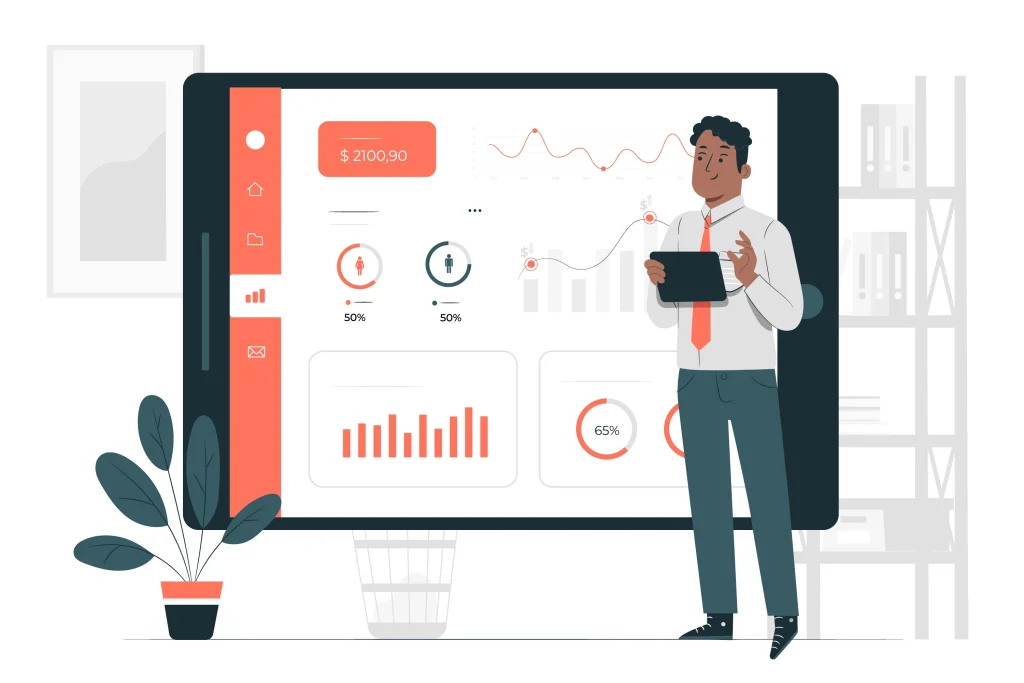
Data-Driven Decision-Making
Data-driven decision-making (DDDM) is an approach to making informed choices based on the analysis and interpretation of data. In organizations, this strategy involves using relevant data to guide business strategies, solve problems, and optimize processes. Here’s a detailed exploration of key aspects of data-driven decision-making:
1. Data Collection:
- Process: Systematic data collection.
- Explanation: Organizations gather data from various sources, including internal databases, customer interactions, market research, and other relevant sources. The data collected can be both quantitative (numerical) and qualitative (descriptive).
2. Data Analysis:
- Process: Analytical tools and techniques.
- Explanation: Employ analytical tools and techniques to examine and interpret data. This may involve statistical analysis, data visualization, machine learning algorithms, and other methods to derive meaningful insights from the collected information.
3. Objective Setting:
- Step: Clearly defined objectives.
- Explanation: Establish clear and specific objectives for decision-making. This ensures that the analysis focuses on addressing specific challenges, opportunities, or goals within the organization.
4. Hypothesis Testing:
- Process: Formulating and testing hypotheses.
- Explanation: Develop hypotheses or assumptions based on the data and test them to validate or invalidate specific ideas. This helps in refining strategies and making more informed decisions.
5. Real-Time Data:
- Focus: Real-time data integration.
- Explanation: Emphasize the use of real-time data whenever possible. This allows organizations to respond promptly to changing conditions and make decisions based on the most current information.
6. Key Performance Indicators (KPIs):
- Metrics: Defined KPIs.
- Explanation: Identify and track key performance indicators relevant to organizational goals. KPIs provide a quantifiable way to measure progress and success, aiding in decision-making.
7. Data Quality and Accuracy:
- Consideration: Ensuring data quality.
- Explanation: Prioritize data quality and accuracy to avoid misleading conclusions. Implement data validation processes and address any issues related to data integrity.
8. Data Visualization:
- Tool: Data visualization tools.
- Explanation: Use data visualization tools to represent complex datasets in a visually accessible format. Visualization aids in understanding patterns, trends, and relationships within the data.
9. Data Governance:
- Practice: Implementing data governance.
- Explanation: Establish data governance practices to ensure that data is managed, protected, and utilized responsibly. This includes defining data ownership, security protocols, and compliance measures.
10. Decision-Making Frameworks:
- Framework: Incorporating data into decision-making frameworks.
- Explanation: Integrate data into existing decision-making processes and frameworks. This ensures that data is considered alongside other relevant factors when making strategic choices.
11. Predictive Analytics:
- Technique: Predictive modeling.
- Explanation: Utilize predictive analytics to forecast future trends or outcomes based on historical data. This allows organizations to proactively address potential challenges or opportunities.
12. A/B Testing:
- Methodology: A/B testing.
- Explanation: Implement A/B testing methodologies to compare two or more variations of a strategy or initiative. This approach helps determine which option is more effective based on empirical evidence.
13. Continuous Monitoring:
- Practice: Continuous data monitoring.
- Explanation: Establish systems for continuous monitoring of relevant data points. This ensures that organizations stay informed about changes in the business environment and can adapt their strategies accordingly.
14. Decision Validation:
- Step: Validating decisions with data.
- Explanation: Validate decisions by assessing their outcomes against expected results. This feedback loop helps organizations learn from their decisions and refine future strategies.
15. Data Literacy:
- Skill: Promoting data literacy.
- Explanation: Foster a culture of data literacy within the organization, ensuring that employees at all levels understand how to interpret and use data effectively in their decision-making processes.
Data-driven decision-making empowers organizations to move beyond intuition and gut feeling, leveraging objective information to guide their actions. By embracing this approach, businesses can enhance their agility, adapt to changing conditions, and make more informed choices that contribute to overall success.
Conclusion
In the fast-paced realm of startups, where agility and adaptability are paramount, Human Resources is both dynamic and indispensable. As we conclude our exploration into the intricacies of HR in startups, it becomes evident that founders are tasked with shaping not only their companies’ trajectory but also their teams’ experiences and well-being.
Founders who prioritize early focus on company culture, embrace agile hiring strategies, and leverage data-driven decision-making are better equipped to navigate the challenges of scaling up while maintaining a vibrant and collaborative workplace. The commitment to fostering diversity and inclusion, supporting employee well-being, and staying abreast of legal compliance further solidifies the foundation for sustained success.
Ultimately, the understanding and implementation of effective HR practices in startups contribute to creating innovative and resilient organizations and cultivating a workplace where individuals are inspired to contribute their best. By incorporating these insights, startup founders can harness the power of HR as a strategic driver, propelling their ventures toward lasting prosperity.
This article was created by the FirstHR team. You can find even more helpful HR tips in the Guides section. In the Template section we have prepared for you the most popular HR documents that you can download for free. Enjoy!





